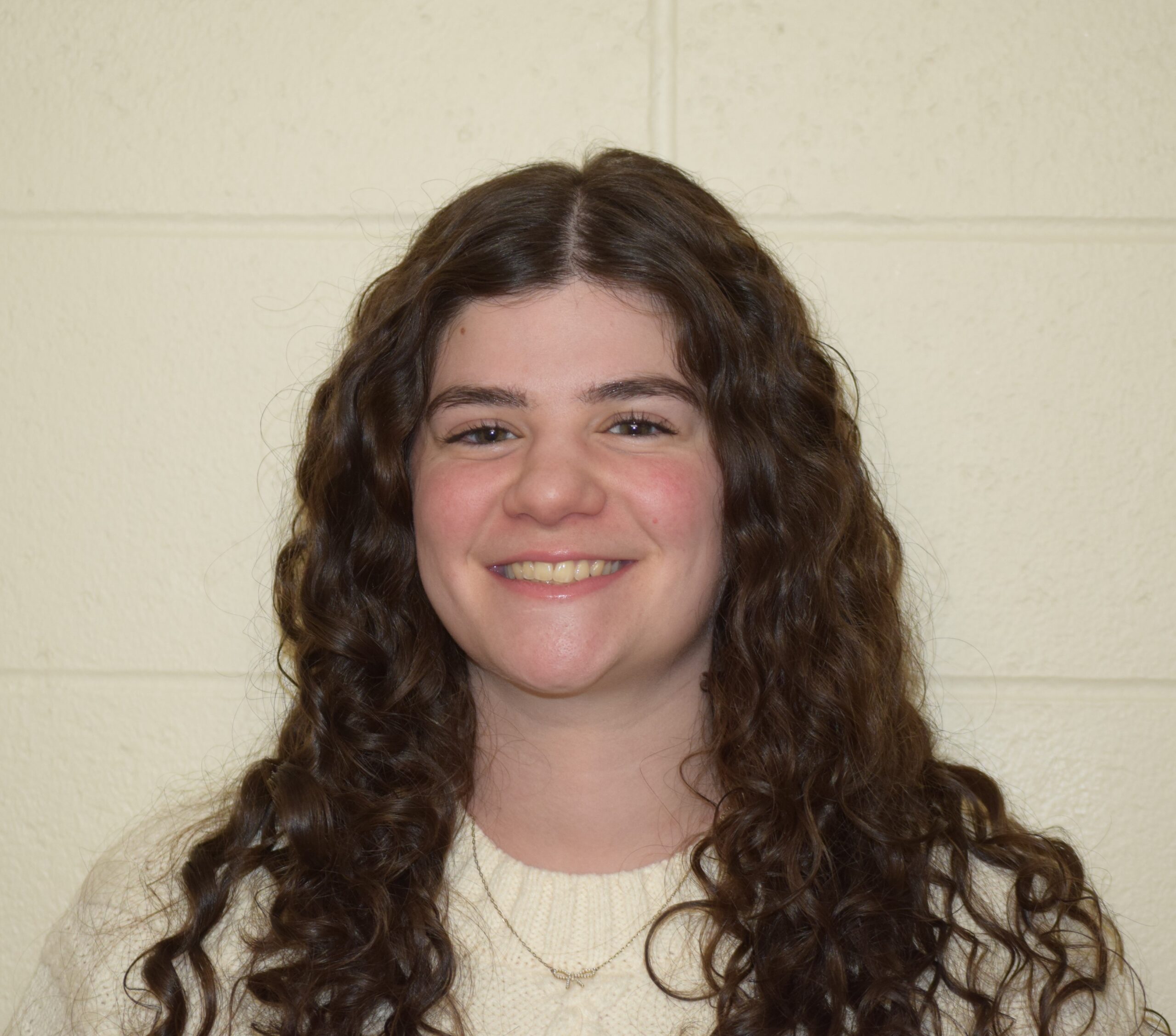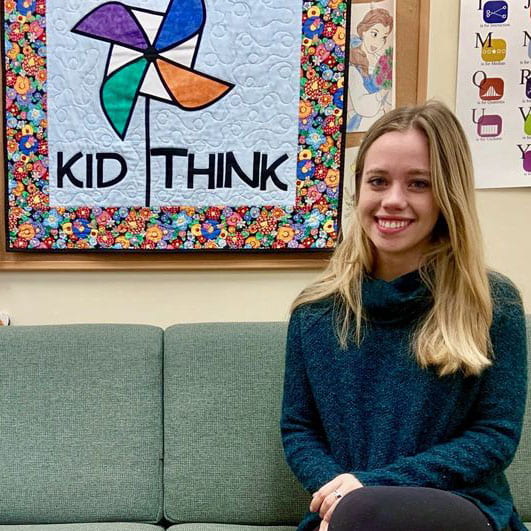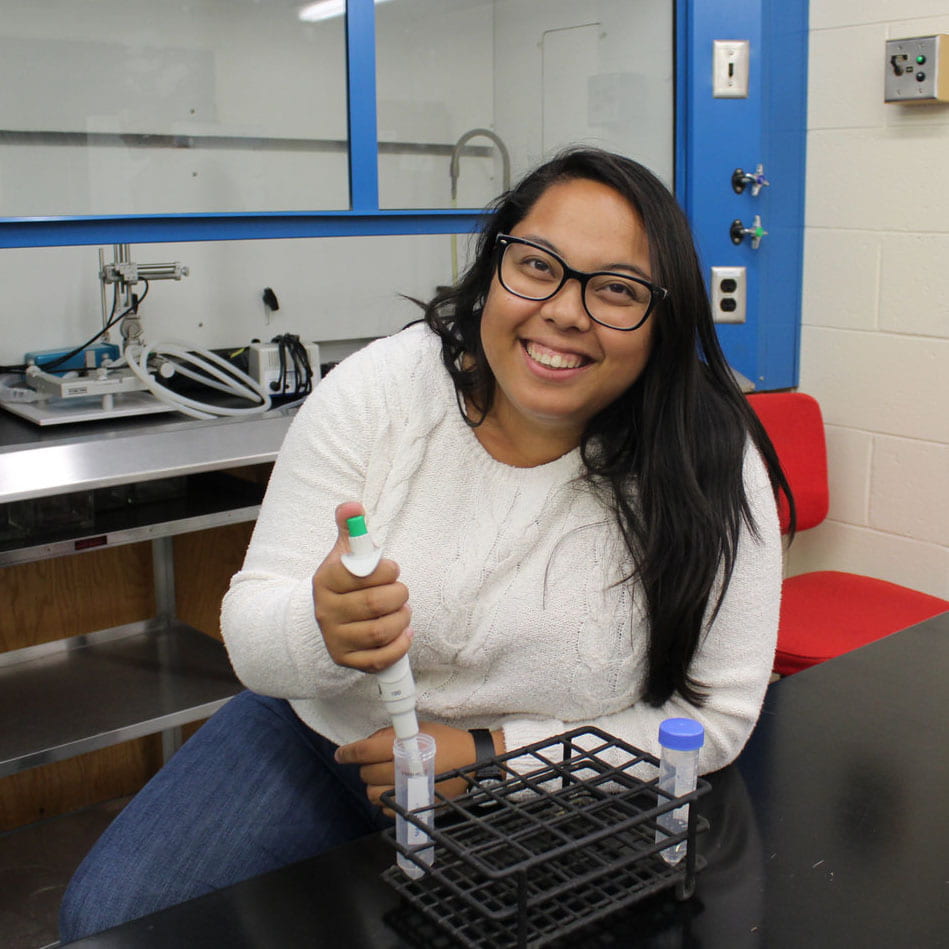Current and Past CARPS Winners

Jenna Gomez-Nieto: 2025-2026
The goal of this research project is to test questions about evidence-based treatments for suicidal thoughts. We hope to understand more about what assessments or interventions randomly selected community mental health providers use when a patient reports suicidal thoughts. An additional question is what predicts how providers assess and treat suicidal thoughts. Our hypothesis is that the provider’s training and attitudes in Safety Planning Intervention and their tolerance for uncertainty will be related to the types of assessment and treatment that they use for patients with suicidal thoughts.

Grace Lynch: 2024-2025
A good night’s sleep is crucial for the health and overall well-being of individuals of all ages, including older adults. Increasing chronological age is often used to explain the changes older adults experience with their sleep routines, including decreased quantity and quality of sleep. Unlike chronological age, subjective age represents how old or young an individual feels. The majority of older adults report feeling younger than their chronological age. Previous studies have demonstrated a connection between older subjective age and worse sleep characteristics. Not only is feeling older associated with an increased likelihood of sleep difficulties but also sleep difficulties are a primary contributor (alongside poorer mood and daily functioning) to awareness of negative-age-related changes. Therefore, this current study aims to examine the associations of sleep health with subjective age and perceptions of the aging process. The findings from this study aim to clarify how perceptions of aging and subjective age influence the complex relationship between age and sleep health.

Joemarie Pulido: 2023-2024
Studies using event-related potentials (ERPs) have demonstrated that encountering violations in gender-based stereotypes (e.g., “The doctor prepared herself for the operation.”) during reading elicits two language-related ERP components, the N400 and P600. The N400 ERP component reflects violations in meaning. The P600 ERP component reflects violations in sentence structure. This study aims to specify how gender-based stereotypes are being recognized by comparing how individuals recognize gender-based stereotype violations in comparison to race-based stereotype violations which are meaning-based by nature. I plan to do this by measuring participants’ electrical brain activity while they read both violations in gender-based and race-based expectations and then compare participants’ average electrical brain activity across the type of stereotype presented. Findings from this study aim to clarify how stereotype violations are recognized linguistically and whether the N400 ERP component or P600 component is modulated by stereotype violations, which may introduce an additional measure for the study of stereotypes.

Maria Graziano: 2022-3023
The values of the Boy Scouts of America (BSA) are strongly aligned with developmental literature regarding protective traits for youths, pointing to the potential benefits of participating in the program. This project will use established measures to profile the traits of scouts and BSA staff attending summer camp. Additionally, adult leaders will report their perceptions of the organizational changes in the BSA. I hypothesize that participants who are involved in the organization to a greater degree will show greater adherence and consistency with the values of the BSA. Based on developmental and social literature, I also hypothesize that female participants will tend to be involved to a greater degree and that there will be an increase in adherence to scouting values for the camp staff from the beginning to the end of the summer. I hypothesize that adult leaders will hold generally positive views on the participation of female scouts. Through creating a profile of the scouts, staff, and leaders, I hope to further our understanding of the value of youth participation in the BSA and the perceptions of recent organizational changes.


Tiffany Berry & Hope Tiboni: 2021-2022
Elementary-aged students (K-6) are discouraged to pursue a passion in science or believe they are unable to do so. We are interested in the efficacy of STEM outreach programs in the classroom and their relationship with attitudes towards STEM. The first aim of this project is to document current STEM-related programs the city of Providence has for elementary-aged children. Our second aim is to conduct STEM outreach in the Providence, RI community with evidence-based practices. By having knowledge of efficient STEM outreach programs, current attitudes towards STEM and outreach in the community, and how attitudes are shifted by STEM outreach for elementary students, we hope to compose an effective STEM outreach program in Providence, RI.

Patrick Fuller: 2020-2021
Research in clinical and developmental psychology has demonstrated a general increase in depression and suicidal ideation throughout adolescence. These increases in psychopathology are explained, among other things, by normal changes in the personal fable, a belief in one’s uniqueness and invulnerability which stems from adolescent egocentrism. However, the personal fable is not a simple, unitary concept. Research suggests that some forms of the personal fable may be associated with maladaptive self-criticism whereas others may be protective. Therefore, the purpose of the current study is to explore which aspects of the personal fable serve as protective or risk factors for depression and suicidal ideation. At the same time, components of resilience (i.e., connectedness, family functioning, attachment), at different levels, may promote or inhibit different aspects of the personal fable. Exploratory research of the role resilience might play in influencing the adolescent personal fable may hold implications for intervention. Therefore, the current study also aims to explore resilience factors as a moderator between the personal fable and depression/suicidal ideation.

Julia Culhane: 2019-2020
This project’s purpose was to analyze young children’s preference in problem solving when encountering problems that are either magical or realistic. An example of a magical problem could be the fear of a mean monster. A realistic problem example could be the fear of a mean teacher. In a laboratory setting, children were presented with a total of 8 illustrated stories that presented either imaginary or real problems of emotional or neutral content. Emotional content elicits positive or negative emotions, whereas neutral content elicits no emotional response. Participants chose between two options to solve the problem presented in the story. The two solutions were either magical or realistic. Additionally, parents completed an online survey. Survey questions further explored the types of solutions that parents use in attempt to solve their child’s magical problems, while also inquiring if a realistic or magical solution was better accepted as an appropriate solution by the child. Ultimately, the project sought to answer the following questions: Do children prefer magical solutions to magical problems? Does emotional content affect what type of solution children prefer? Does this change with age and development?

Katrina Dayaw: 2018-2019
The purpose of the Posterior Parietal Cortex cannot be confirmed until its role is evaluated in non-primate situations. For this research project, we look to define the boundaries of the PPC. The PPC is a region essential for the selection of sensory information based on previous knowledge and goals (top-down processing) and presented stimuli that are deemed behaviorally relevant (bottom-up processing). The overall goal of these research endeavors is to strengthen the previous findings of the structure and function of the PPC, its role in top-down and bottom-up processing, and how it functions in relation to other associative structures. This project will be divided into two specific aims. Aim 1 looks to evaluate PPC contribution in top-down and bottom-up processing. We hypothesize that the PPC does support both processes and that the PPC is involved in spatial memory and social information. Based on our hypotheses, we predict that rats with damage to the PPC will show impairment on the challenge aspects of the 5 Choice Serial Reaction Task and in object-location memory, as well as social recognition. Specific Aim 2 looks to dissociate the function of the subdivisions that have been previously defined. We hypothesize that the dorsal PPC will be more associated with top-down processing and that the caudal PPC will be more associated with bottom-up processing. Based on our hypotheses, we predict that the dPPC group will show difficulty in the 5CSRT challenges that involve top-down challenges, and the opposite goes for the cPPC. We also predict that the dPPC will show difficulty in spatial object-location memory and social recognition, and no impairment in standard object recognition for both cPPC and dPPC groups. The use of top-down processing that guide memory retrieval, decision making, and other attentional functions are often disrupted in many neurological disorders. By mapping the function of PPC, we are able to introduce more translational research regarding the PPC and memory processes.
Jennifer Van Reet
Professor of Psychology, CARPS Advisor
Sowa Hall 0122
jvanreet@providence.edu





